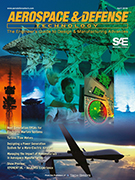Book

LiDAR Technologies and Systems
2019-07-10
Why are vision systems fundamental and critical to autonomous flight? What are the vision system tasks required for autonomous flight? How can those tasks be approached? It addresses the role of vision systems for autonomous operations and discusses the critical tasks required of a vision system, including taxi, takeoff, en-route navigation, detect and avoid, and landing, as well as formation flight or approach and docking at a terminal or with other vehicles. These tasks are analyzed to develop field of view, resolution, latency, and other sensing requirements and to understand when one sensor can be used for multiple applications. Airspace classifications, landing visibility categories, decision height criteria, and typical runway dimensions are introduced. The book provides an overview of sensors and phenomenology from visible through infrared, extending into the radar bands and including both passive and active systems.







